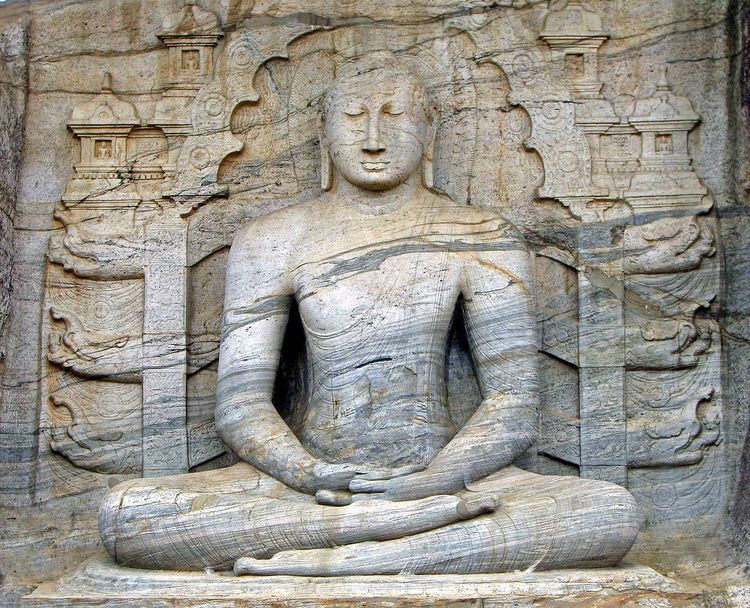 | ||
The Nettipakarana (Pali: -pakaraṇa, also called Nettippakarana or just Netti) is a Buddhist scripture, sometimes included in the Khuddaka Nikaya of Theravada Buddhism's Pali Canon. The main theme of this text is Buddhist Hermeneutics through a systematization of the Buddha's teachings. The Sri Lankan scholar Dhammapala wrote a commentary on this text in the fifth century. An English translation titled "The Guide" by Bhikkhu Nanamoli was published in 1962 by the Pali Text Society.
Structure
The Nettipakarana is divided into:
The Uddesavāra gives three separate categories (Pali terms with Nanamoli's translations):
- The sixteen hāras (conveyings, or modes of conveying) are : Desanā (teaching), vicaya (investigation), yutti (construing), Padatthāna (footings), Lakkhana (characteristics), Catuvyūha (fourfold array), Āvatta (conversion), Vibhatti (analysis), Parivattana (reversal), Vevacana (synonyms), Paññatti (descriptions), otarana (ways of entry), sodhana (clearing up), adhitthāna (terms of expression), parikkhāra (requisites), and samāropana (co-ordination).
- The five naya (guidelines) are : Nandiyāvatta (conversion of relishing); tipukkhala (trefoil); sīhavikkīlita (play of lions) ; disālocana (plotting of directions); ankusa (the hook).
- The eighteen mūlapadas consist of nine kusala and nine akusala.
- Nine akusala are
- Tanhā (craving), avijja (Ignorance),
- Lobha (greed), Dosa (Hate), Moha (Delusion),
- Subha saññā (perception of beauty), Nicca saññā (perception of permanence), Sukha saññā (perception of pleasure). Attasaññā (perception of self);
- Nine kusala are:
- samatha (quiet), vipassanā (insight),
- alobha (non-greed), adosa (non-hate), amoha (non-delusion),
- asubhasaññā (perception of ugliness), Dukkhasaññā (perception of pain), Aniccasaññā (perception of impermanence), and Anattasaññā (perception of not-self) etc.
- Nine akusala are
References
Nettipakarana Wikipedia(Text) CC BY-SA
